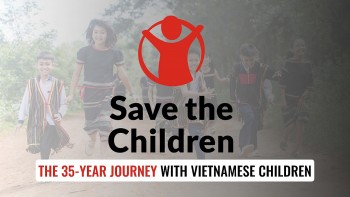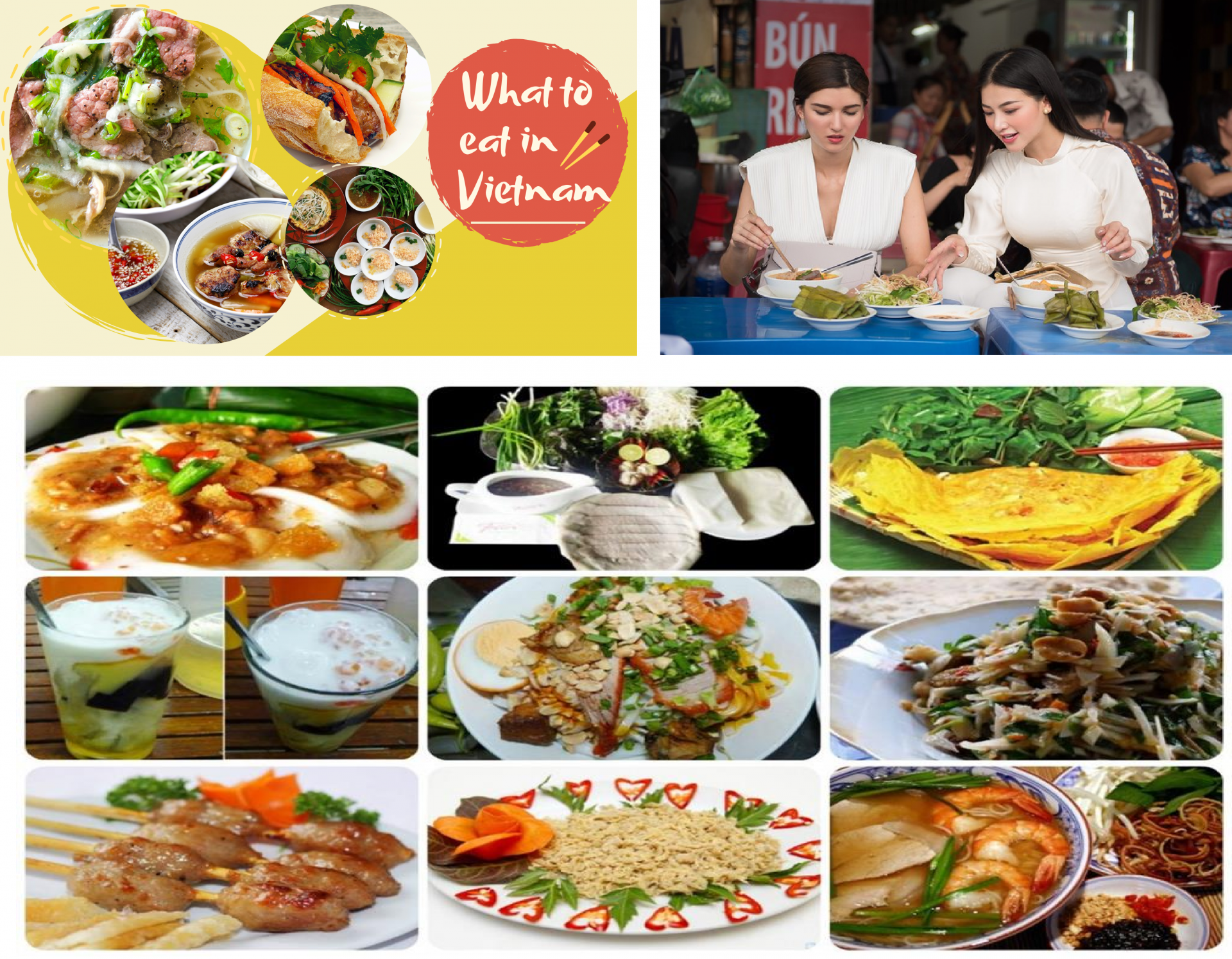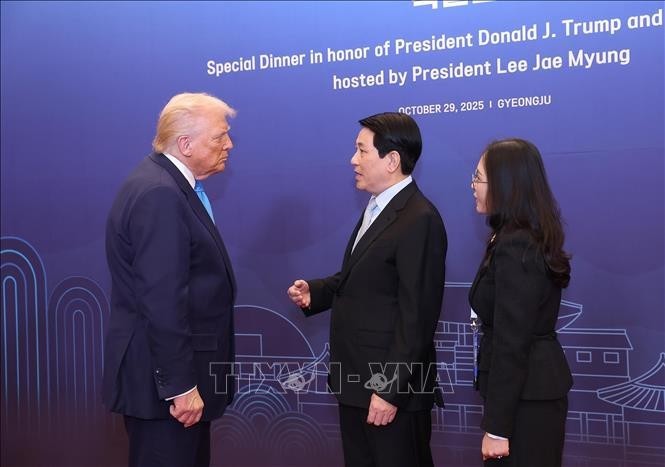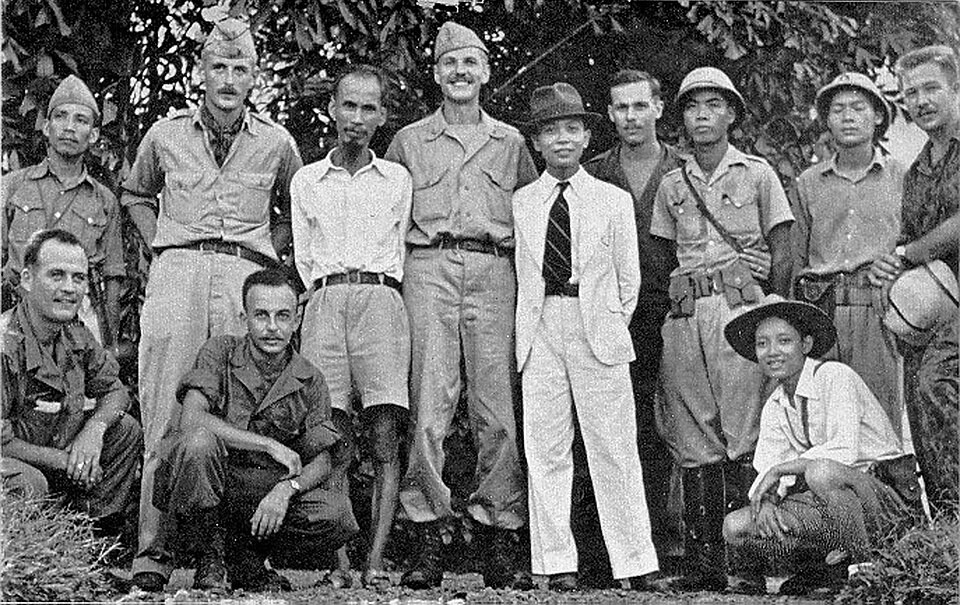When People Promote Vietnam-US Reconciliation:
Part 1: Humanitarian Legacy Paves Way for Future
| PeaceTrees Vietnam: Healing War Legacies, Building the Future | |
| Viet Nam-USA Society: 80 Years of Remarkable Journey |
According to Ha Huy Thong, cooperation on the search for US service members missing in action (MIA) and the meetings between veterans and writers of both countries reopened a channel of contact between Vietnam and the United States, laying the foundation for the post-war reconciliation process.
MIA Cooperation Reopens Vietnam-US Dialogue
In 1977, Vietnam and the United States began negotiations to normalize relations under President Jimmy Carter. The first meeting, held in Paris (France) in May 1977, did not achieve the goal of establishing full diplomatic relations, but produced an important outcome: the United States did not oppose Vietnam’s admission to the United Nations. On September 20, 1977, Vietnam officially became a member of the United Nations.
From 1978 onward, as the international context shifted, opportunities for normalization narrowed, even though Vietnam declared itself ready for unconditional normalization. In 1979, citing the “Cambodia issue,” the United States announced the suspension of negotiations, sending the relationship into a near-freeze.
After taking office in 1981, President Ronald Reagan identified the MIA issue as a national priority. Gradually, after years of interruption, the door for bilateral contact began to reopen.
According to Ha Huy Thong, in February 1982, Deputy Assistant Secretary of Defense Richard Armitage traveled to Vietnam to raise the MIA issue. Ha Huy Thong, then working at the North America Department of the Ministry of Foreign Affairs, attended the meeting chaired by Nguyen Co Thach, Vice Chair of the Council of Ministers and concurrently Minister of Foreign Affairs.
“At the meeting, Minister Nguyen Co Thach affirmed that Vietnam considered the MIA issue a humanitarian matter and was willing to cooperate; at the same time, the US side should also coordinate in addressing the issue of missing Vietnamese soldiers and other humanitarian problems left behind by the war. He spoke candidly yet tactfully, comparing humanitarian cooperation to ‘a two-way road,’ meant to resolve issues on both sides,” Ha Huy Thong recounted.
From August 1 to 3, 1987, General John Vessey, former Chairman of the US Joint Chiefs of Staff and Special Envoy of President Reagan on Prisoner of War and Missing in Action (POW/MIA) issues, visited Vietnam to discuss humanitarian cooperation. Among the delegation was Frederick Downs, a veteran who lost his left arm after stepping on a mine on the Vietnam battlefield in 1967.
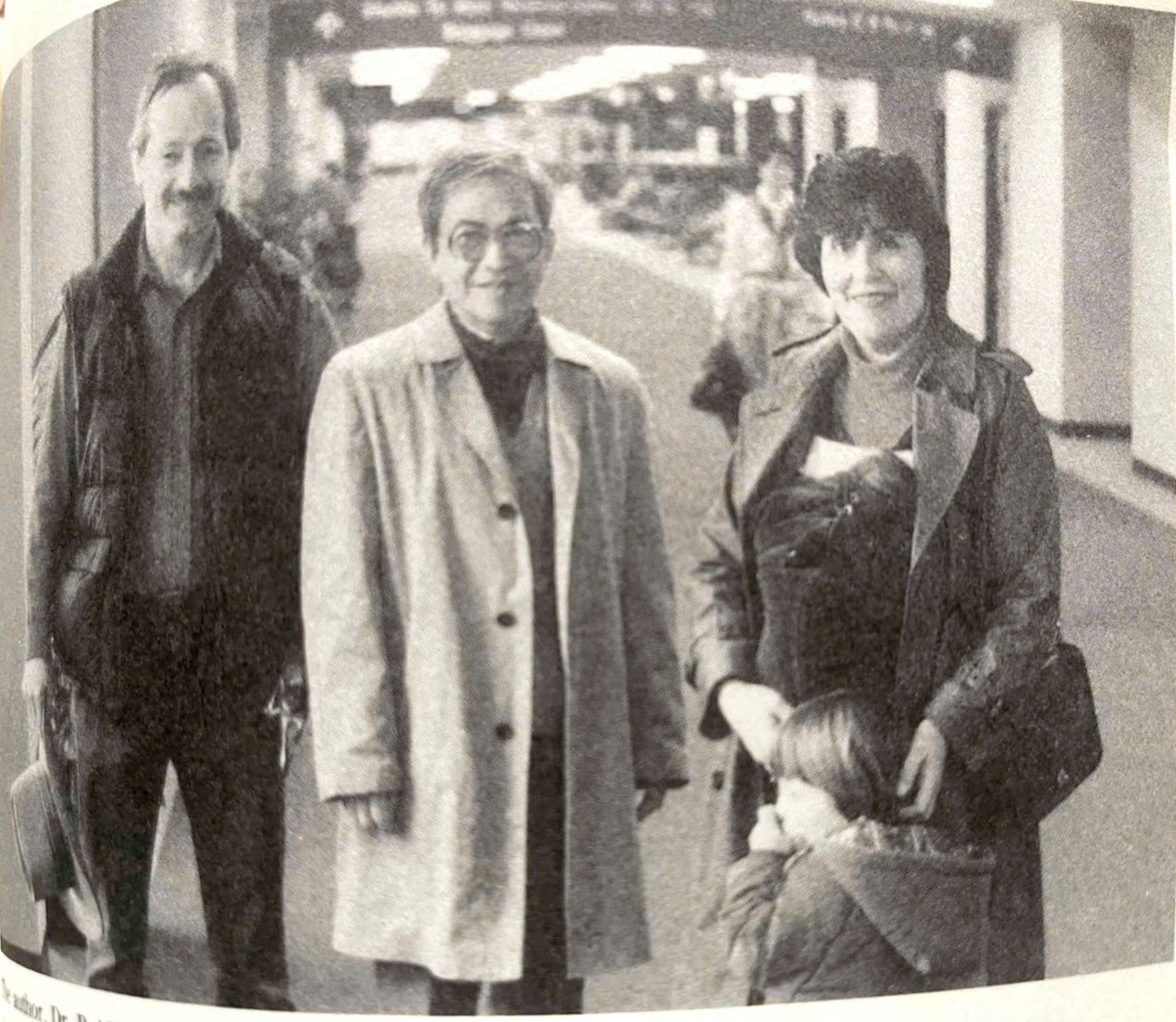 |
| Frederick Downs and his wife, Mary, welcomed Dr. Bui Tung (center) at Dulles Airport (Washington, D.C.) during his visit to the United States from November 28 to December 3, 1988. (Photo from the book “No Longer Enemies, Not Yet Friends: An American Soldier Returns to Vietnam”) |
In the book “No Longer Enemies, Not Yet Friends: An American Soldier Returns to Vietnam” (published in 1991 by W.W. Norton & Co., Inc.), written after his five trips to Vietnam, Downs recounted that the US side raised issues of concern such as half-breeds, individuals departing under the Orderly Departure Program (ODP), and those in reeducation camps (HO). The Vietnamese side presented the consequences of war: millions of people with disabilities, hundreds of thousands of orphans, destroyed schools and hospitals…
The two sides agreed to divide their work into two groups: one on POW/MIA issues, and one on Vietnam’s humanitarian matters, starting with the prosthetics program.
On October 13, 1987, the US Departments of State and Defense released the report of the US Presidential Envoy and nongovernmental organizations on persons with disabilities in Vietnam. Due to the embargo, the US Government could not provide funding, but the report encouraged American NGOs to support humanitarian projects in Vietnam.
In his book, Downs wrote that before coming to Vietnam, he had read a United Nations report ranking Vietnam very low in terms of prosperity. Poverty was visible along the road from the airport into the city, yet he did not encounter hostility from the people. He recounted a meeting on August 26, 1987 with Dang Nghiem Bai, Director General of the North America Department (Ministry of Foreign Affairs of Vietnam), and Dr. Bui Tung, Director of the prosthetics center under the Ministry of Labour, Invalids and Social Affairs.
After 1987, Downs supported projects at Xa Dan School for Deaf and Mute Children, Nguyen Dinh Chieu School for the Blind, among others. In November-December 1988, he invited Dr. Bui Tung to accompany Nguyen Dinh Ngo, Vice Chairman of the Thua Thien Hue People’s Committee, on a visit to the United States and to his family in Washington, D.C.
Downs believed that humanitarian issues were the catalyst enabling both sides to resolve differences. He wrote: “I had become a part of Vietnam, and Vietnam had also become a part of me (...). Any soldier returning from battle knows that the time will come when the gunpowder smoke disappears and the dust settles. It is in that moment of generous reflection that the war truly ends.”
The Meeting Between Writers and Veterans
In 1989, Ha Huy Thong was Press Attaché at the Permanent Mission of Vietnam to the United Nations in New York (United States). He recalled: At that time, diplomatic staff were only permitted to travel within a 25-mile radius. After receiving an invitation to a meeting between writers and veterans of the two countries at the William Joiner Center (Boston, Massachusetts), 200 miles from New York, Ha Huy Thong had to request special permission. With the support of Michael Marine, Deputy Director of the Vietnam-Laos-Cambodia Desk (US Department of State), he was granted approval to leave New York. Ha Huy Thong attended the meeting to facilitate contact in a context still marked by major linguistic, cultural, and psychological differences.
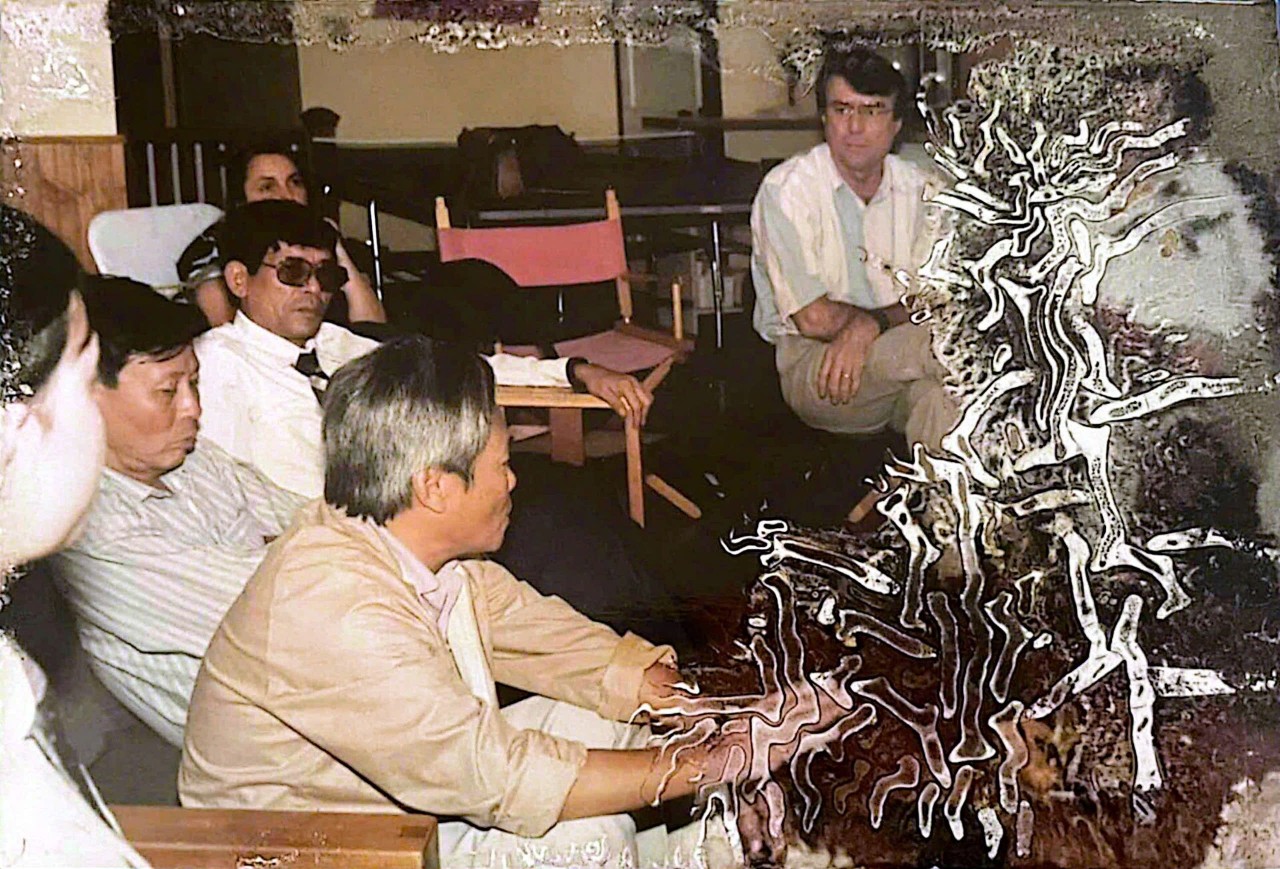 |
| The gathering of Vietnamese and American writers and veterans in Boston, Massachusetts, United States, August 3, 1989. (Photo provided by Ha Huy Thong) |
“In the first few minutes, everyone was still awkward, but candor and sincerity quickly brought people closer. Many American veterans said that when they went to peaceful villages and saw the friendliness of the people, they asked themselves why they had to carry guns. Some wiped their eyes as they recalled moments between life and death. Having once worn a soldier’s uniform, I was moved hearing them talk about reconciliation and forgiveness after decades.
Many questions were raised: Why did we have to go to the battlefield? Why did so many students and young people have to leave their families? More than a few believed that the embargo policy at the time prolonged the division between the two sides.
In the end, both sides agreed that dialogue among veterans, writers, and scholars would help heal the wounds of war. Later on, several veterans who attended continued their connection with Vietnam, even marrying Vietnamese women,” Ha Huy Thong recounted.
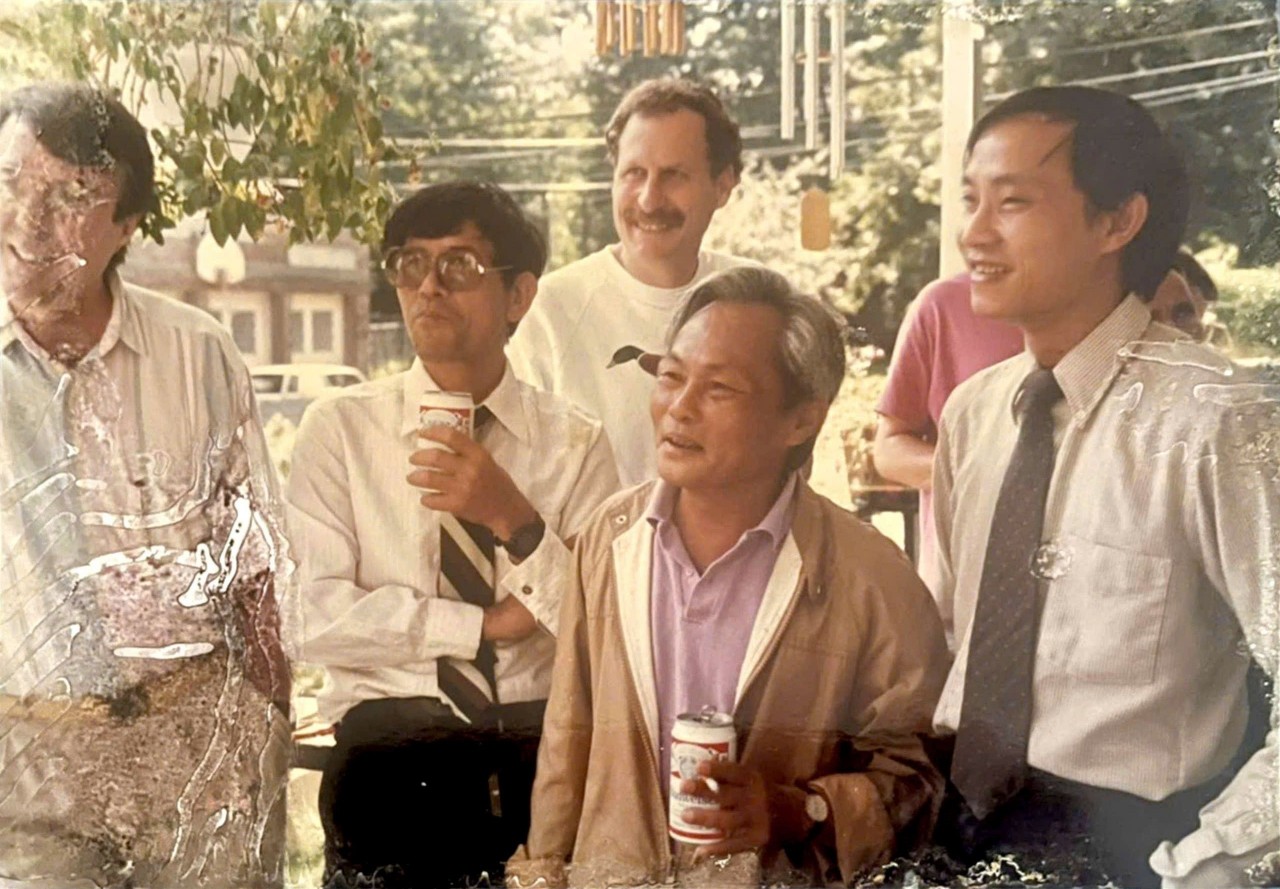 |
| Front row, from right: Ha Huy Thong, writer Nguyen Quang Sang, writer Le Luu at the home of American poet and veteran Kevin Bowen, August 3, 1989. (Photo provided by Ha Huy Thong) |
He added: “Many Americans told us that once former adversaries can sit together and say ‘Let us be friends,’ it means the two countries should also reconcile. Indeed, they became the strongest advocates for the normalization of Vietnam-US relations.”
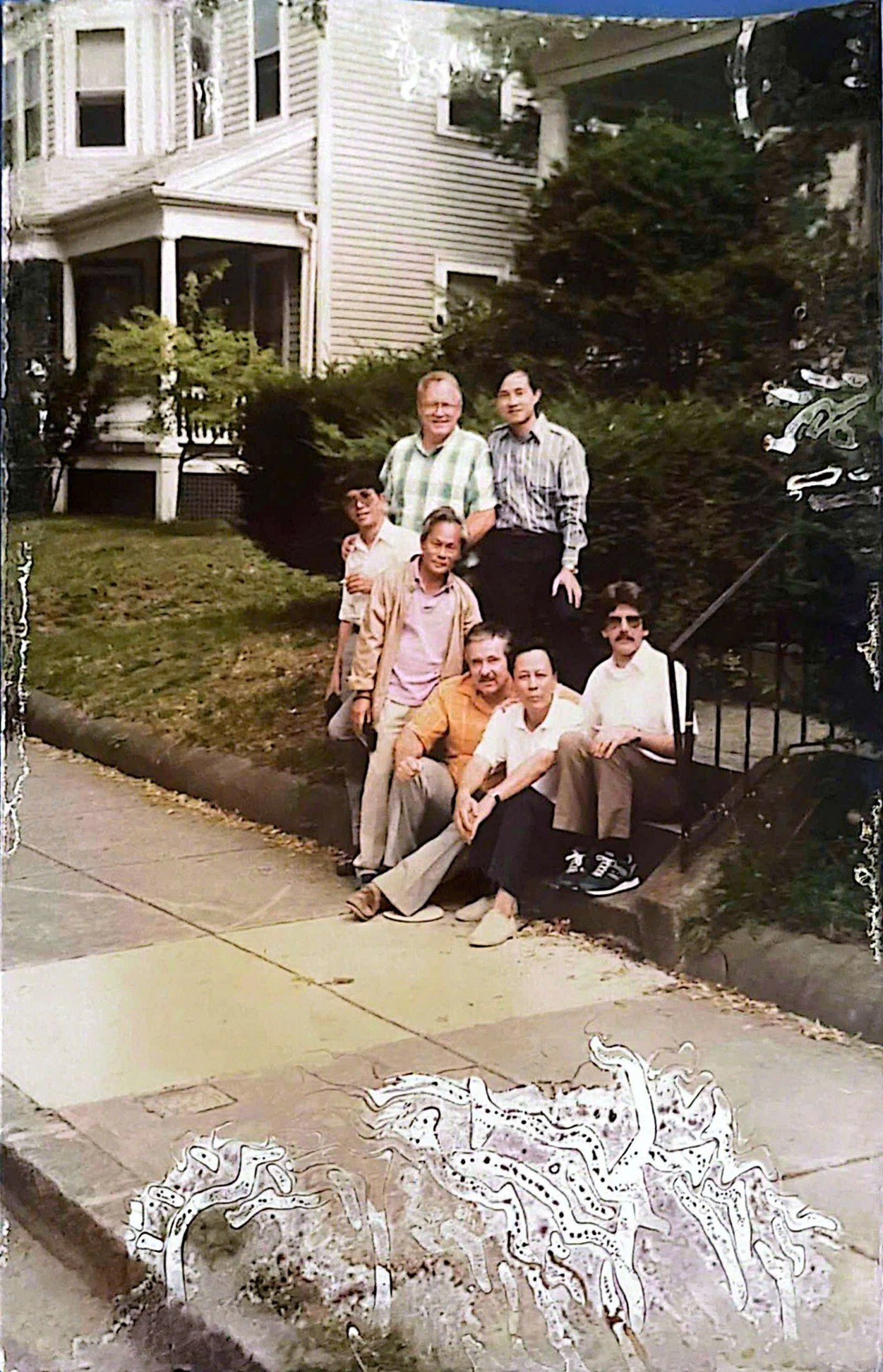 |
| Vietnamese and American writers and veterans posing for a commemorative photo in Boston, Massachusetts, United States, August 2, 1989. (Photo provided by Ha Huy Thong) |
On November 21, 1991, the two countries held the first round of negotiations on normalization. According to Ha Huy Thong, it was no coincidence that when announcing the lifting of the embargo (February 3, 1994) or the normalization of relations with Vietnam (July 11, 1995), US President Bill Clinton invited many senators and officials who were veterans of the Vietnam War, such as John Kerry, John McCain, and John Vessey - those who led efforts for reconciliation, to attend the events. It was also no coincidence that Pete Peterson, a veteran and US congressman, was appointed by President Clinton as the first US Ambassador to Vietnam.
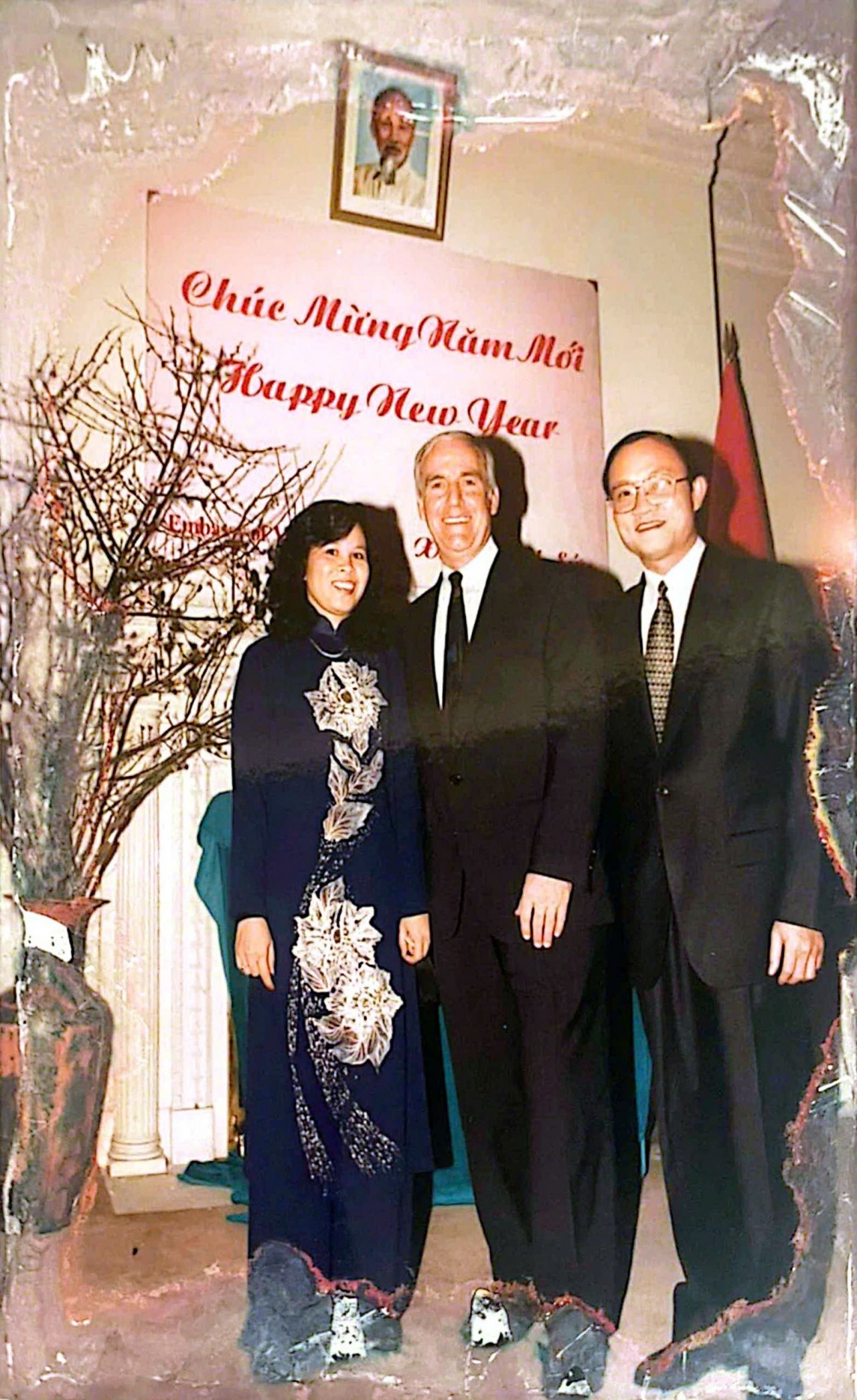 |
| Former Congressman Pete Peterson (center) extends Lunar New Year greetings to Chargé d’Affaires Ha Huy Thong and his spouse at the newly opened Embassy of Vietnam in Washington, D.C., February 1997, before assuming his post as the first US Ambassador in Hanoi. (Photo provided by Ha Huy Thong) |
 | Vietnam-US Relations: From Cultural Exchange to Comprehensive Strategic Partnership Nearly 30 years after Vietnam and the United States (US) established diplomatic relations (1995–2024) and a Comprehensive Partnership (on July 25, 2013), the two countries ... |
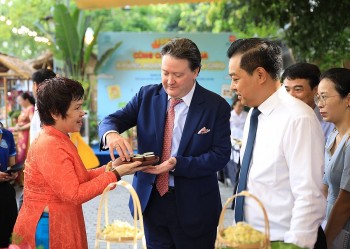 | Vietnam-US Relations: Strengthening Ties Through Cultural and People-to-People Exchange With efforts to overcome differences and barriers in culture, Vietnam and the USA have laid a strong foundation for bilateral friendship and cooperation. |
Recommended
 Friendship
Friendship
People-to-People Diplomacy in Can Tho 2025: Mobilizing Global Resources for Growth
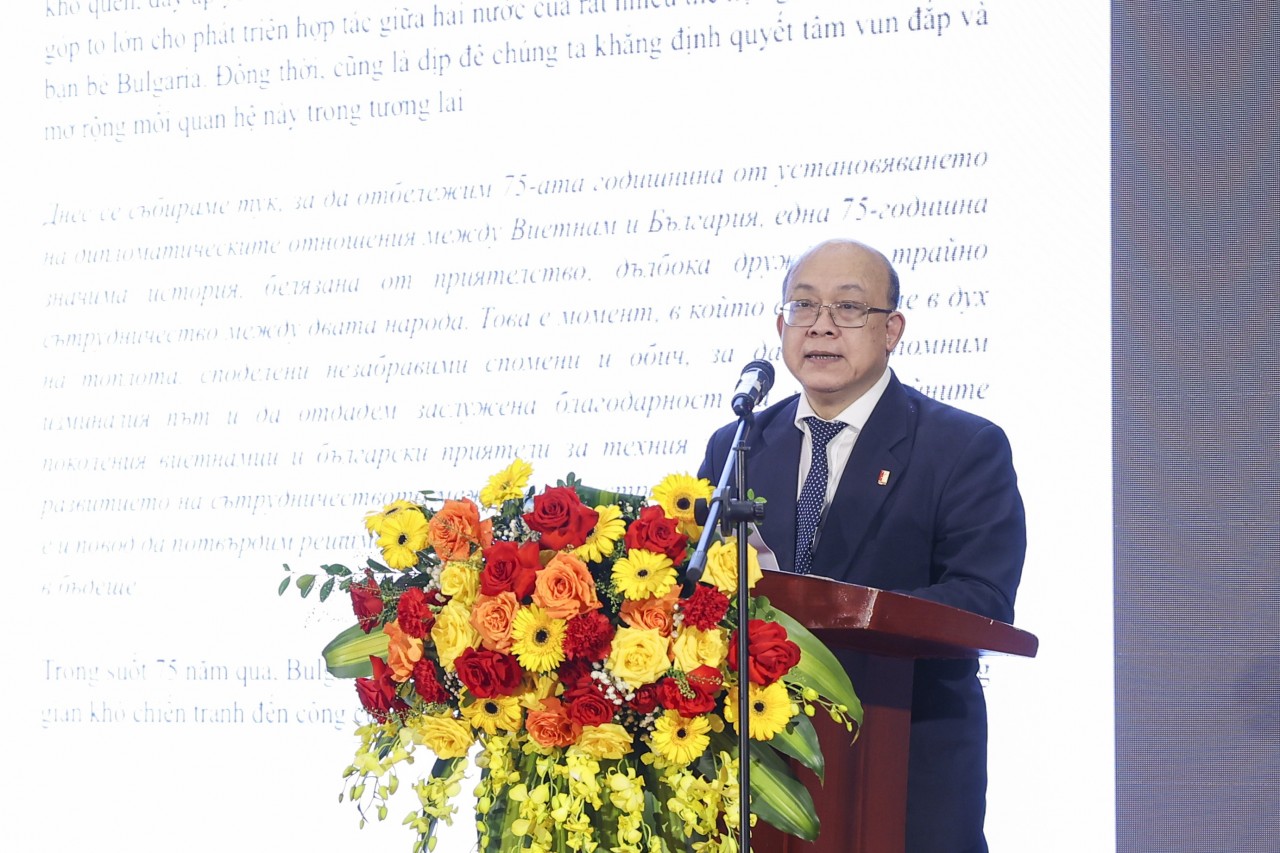 Friendship
Friendship
Strengthening Vietnam-Bulgaria Friendship
 Friendship
Friendship
Kaneya Manabu and His Journey to Discover Viet Nam Through the Vietnamese Language
 Friendship
Friendship
Viet Nam-UAE: Key Advances in Tourism, Culture, and People-to-people Exchanges
Popular article
 Friendship
Friendship
Strengthening Traditional Friendship Between Vietnam and Bulgaria
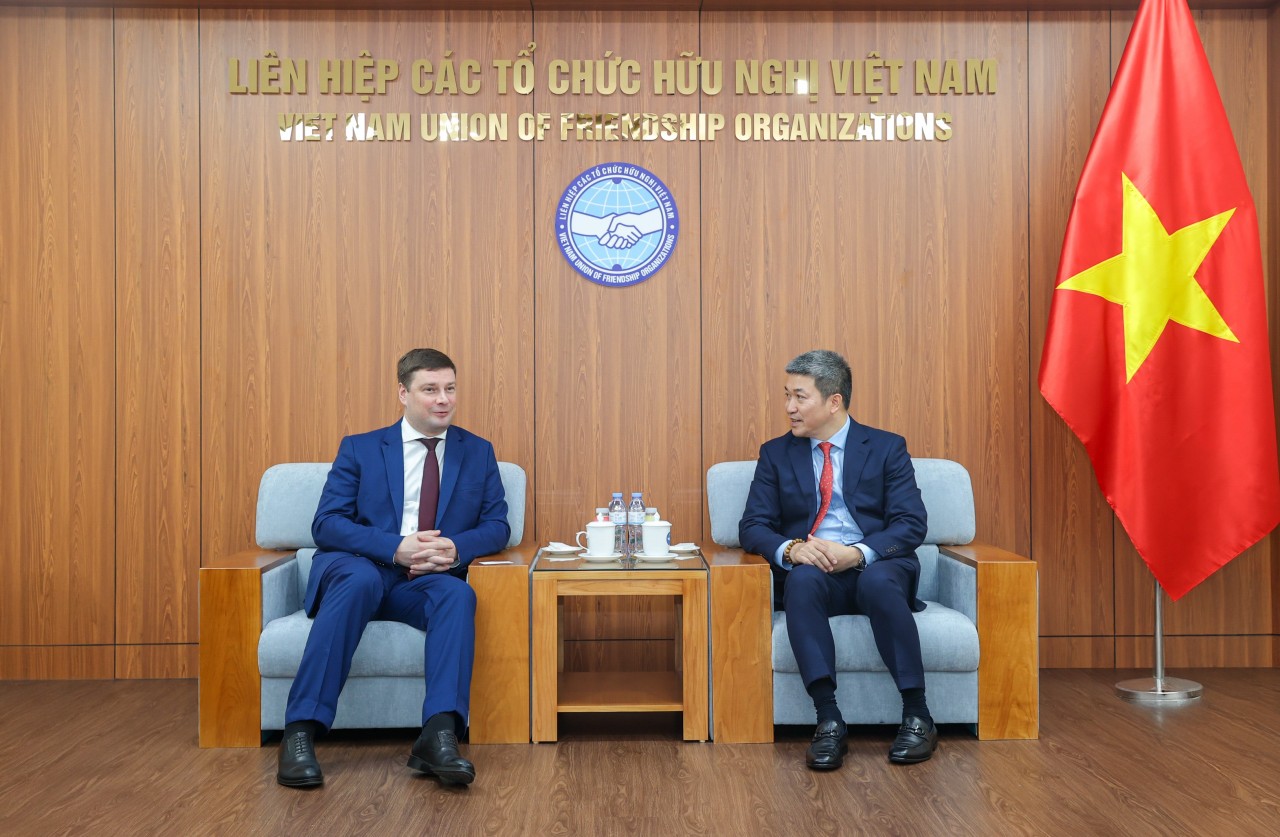 Friendship
Friendship
Enhancing Educational Cooperation, Promoting Vietnam-Russia Friendship
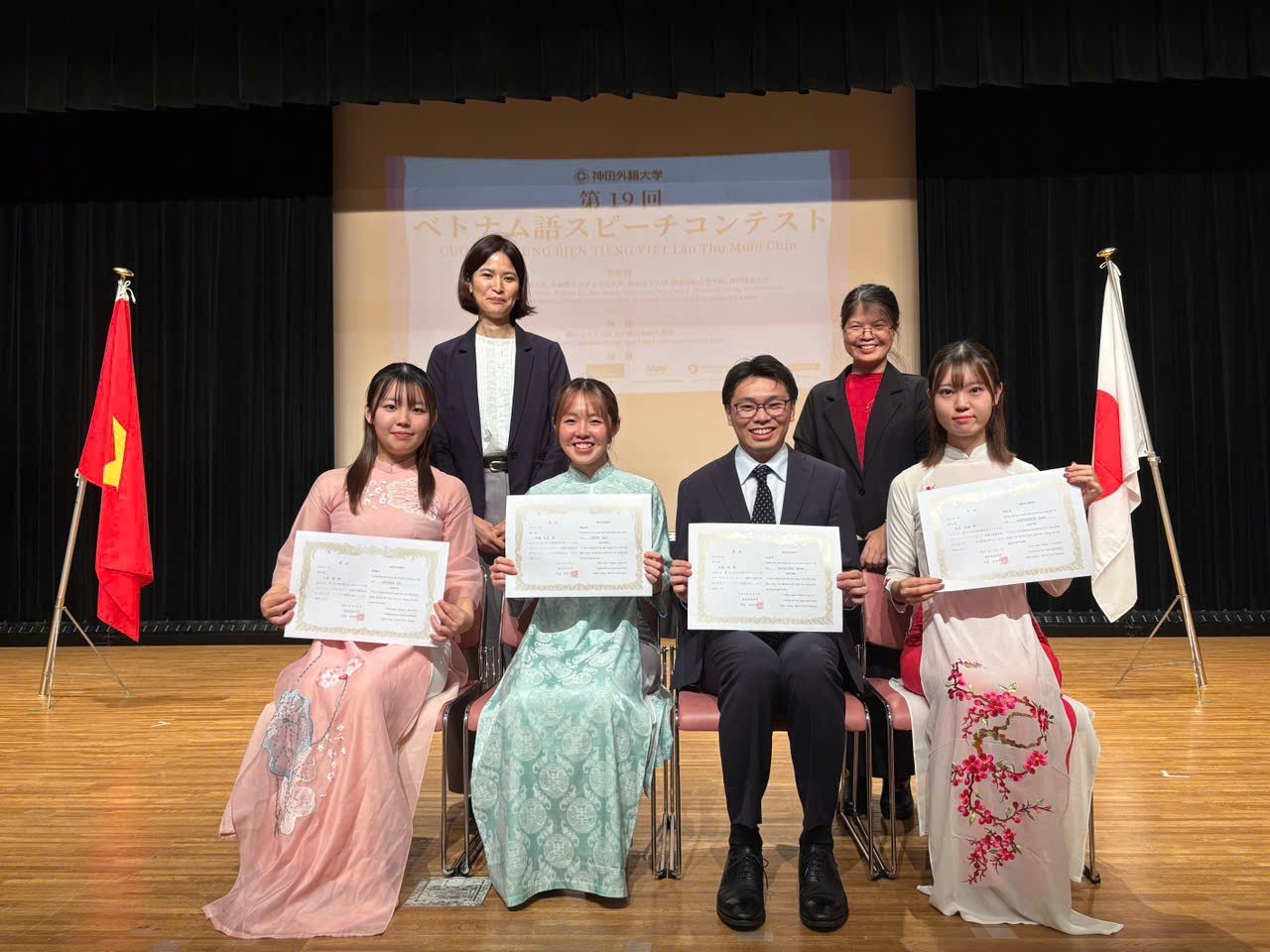 Friendship
Friendship
Hikaru Watanabe: Vietnamese Grows from Simple, Everyday Sounds and Greetings
 Friendship
Friendship

